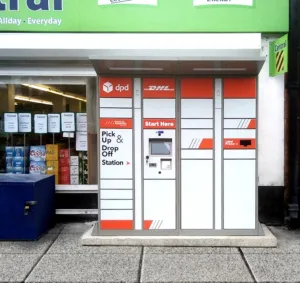By John Finnerty, Indirect Tax Director at Digital River
Online retailers want to make the most of international opportunities in today’s global marketplace. However, for your product to reach customers worldwide, it’s vital to consider local tax implications. While a booming international market might signal success, the sting in the tail is unforeseen landed costs that can wreak havoc on the customer experience. Here we break down what retailers need to know about importation costs and points to consider for smooth sailing.
The complexities of Landed Cost
Landed cost is the total cost paid for an international purchase by the time it reaches the shopper’s doorstep. It encompasses the value of goods, import duties and taxes, shipping and any additional fees such as insurance, handling, and country and commodity-specific clearance fees.
We will concentrate on import tariffs/duties and VAT/GST, which are determined by the type of good and/or the order amount. Differing regulations and rates are made even more complex by the difference in status between B2B and B2C. For example, imports into the UK attract import VAT, the supplier is obliged to account for 20% UK VAT on B2C supplies below 135 GBP, supplies of the same value to a B2B shopper are subject to the reverse charge mechanism and attract 0% UK VAT. Supplies above 135 GBP for both B2B & B2C are subject to import VAT at 20% which is payable on the customs clearance. There are similar low value threshold rules in play for supplies to EU end shoppers with the added complexity that the rates of VAT between EU Member States ranges from 17% to 27%.
As has probably already become clear, this is a complicated area to navigate, but it is possible to simplify things by using third-party solutions to help calculate what is required and where. The constantly critical factor however, is whose responsibility is it to settle the bill?
Whose bill is it anyway?
Multiple parties are involved in getting an order to the door. Whose responsibility is it to settle the customs bill? This all depends on which party in the supply chain acts as the Importer of Record (IOR), and brands can choose to assign this in different ways.
- Brand as the Importer of Record
All taxes due are settled in the name of the brand which will instruct its carrier to declare the goods in the brand’s name. Some larger brands like to control the import process and provide an onshore experience for the end shopper. This eliminates any compliance and import payment obligation for the end shopper. Brands usually operate in the market where they have material volumes of sales, and they are looking to provide the best possible end shopper experience. For smaller markets where there is lower demand for goods, they may decide to use one of the other possible options described below.
- End Shopper as the Importer of Record
Where the goods are declared in the name of the end shopper, the brand has elected for the end shopper to pay the import fees due directly to the local taxing authority. This usually involves the shopper getting notification from the local customs authority that an additional import tax amount must be paid before the goods will be released.
As a delivery model to end shoppers this is the least preferred. It can result in delays in the delivery to the end shopper and higher rates of returns when the shopper is informed of the additional tax/duty liability to be paid.
- End Shopper as the Importer of Record – Delivered Duties Paid (DPP)
As above, the goods are declared in the name of the end shopper, however, the brand pre-determines the fees required and charges the consumer in the cart at check out. Under this model, the carrier will settle all import fees due in the name of the end shopper when the goods arrive at the ship-to location. The end shopper will pay no additional taxes when the goods are imported into their jurisdiction. This offers a guaranteed landed cost model for the end shopper. They are essentially receiving the closest thing to a local shopping experience from their supplier – no surprise additional payment due to receive the goods on delivery.
Simplifying the guaranteed DDP experience
When ordering from abroad, no customer wants the surprise of an unexpected import tax bill. To ensure a transparent and smooth experience, it’s vital that the cost of import taxes is understood at the time of purchase and accounted for in pricing strategies. With differing requirements and rates for different jurisdictions, this process can complicate efforts to provide international shoppers with smooth experiences, but a positive purchase experience should be universal.
By engaging with the right partner who has the sophisticated tax software in place, it is possible to ensure the end shopper gets a local buying experience with no additional surprises, where landed costs are clear upfront. This is referred to as the DDP (Delivered Duties Paid) experience, in which retailers are now able to offer customers a seamless service through the implementation of tax automation technology combined with localised e-commerce experiences.
Brands looking to achieve global scale can consider working with a partner that takes on the responsibility of cross-border logistics and compliance. Combining payment processes with tax solutions with a partner that melds technology and expertise means you can get on with taking your brand to the next level while your customers get on with enjoying a great experience, wherever they are.







